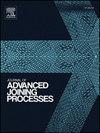A novel approach to control thermal induced buckling during laser welding of battery housing through a unilateral N-2-1 fixturing principle
IF 4
Q2 MATERIALS SCIENCE, MULTIDISCIPLINARY
引用次数: 0
Abstract
Battery housing (BH) in modern electric vehicles must meet demanding functional requirements. The design and geometry of the BH become intricate to prevent damage during collisions and to ensure absolute impermeability to gases and water during operation. Moreover, in the pursuit of a lightweight BH, manufacturers rely on high-strength 6xxx aluminium alloys, posing significant challenges for the welding processes. It is estimated that up to 30 m of weld length is required during the construction of battery housings including joining the lid and under-shield to the main structural frame and joining the ribs to the frame for standard vehicles. Due to the increasing use of thin sheets for lightweighting the structure, thermal-induced buckling may occur and generate critical dimensional unconformities going beyond design tolerances. This underpins the need to optimise fixturing design to control thermal-induced buckling.
This paper goes beyond the state-of-the-art “N-2-1″ approaches for fixturing thin and deformable parts and proposes the new principle of “unilateral N-2-1 fixturing”. The driving idea is adding unilateral restraints to the direction of thermal contraction, which ultimately causes buckling; and, keeping the direction where the thermal expansion occurs in a free state. The methodology is based on three main steps: (1) physics-based modelling of parts and fixtures using a thermo-mechanical FEA simulation; (2) calibration of the weld heat source using metallographic data; (3) validation using optical scanning technology. The methodology was demonstrated during the laser beam welding of a high-strength aluminium 6xxx thin deformable lid to a rigid high-strength 6xxx aluminium extrusion frame. Results indicated that the thermal induced buckling deformation was reduced from 15 mm, when using the state-of-the-art fixturing approach, to approximately 2 mm with the proposed methodology.
通过单侧 N-2-1 固定原理控制电池外壳激光焊接过程中热诱导屈曲的新方法
现代电动汽车的电池外壳(BH)必须满足苛刻的功能要求。电池外壳的设计和几何形状变得错综复杂,以防止在碰撞过程中损坏,并确保在运行过程中绝对不会渗入气体和水。此外,为了追求 BH 的轻量化,制造商采用了高强度的 6xxx 铝合金,这给焊接工艺带来了巨大挑战。据估计,在建造电池外壳的过程中,需要长达 30 米的焊接长度,包括将盖子和下护板连接到主结构框架上,以及将肋骨连接到标准车辆的框架上。由于越来越多地使用薄板来实现结构轻量化,因此可能会出现热引起的屈曲,并产生超出设计公差的关键尺寸偏差。本文超越了最先进的 "N-2-1 "薄型可变形部件固定方法,提出了 "单侧 N-2-1 固定 "的新原则。其原理是在最终导致弯曲的热收缩方向增加单侧约束,并使热膨胀方向保持自由状态。该方法基于三个主要步骤:(1) 使用热机械有限元分析模拟对零件和夹具进行物理建模;(2) 使用金相数据校准焊接热源;(3) 使用光学扫描技术进行验证。在将高强度 6xxx 薄变形铝盖与刚性高强度 6xxx 铝挤压框架进行激光束焊接时,对该方法进行了演示。结果表明,在使用最先进的固定方法时,热引起的屈曲变形从 15 毫米减小到使用建议方法时的约 2 毫米。
本文章由计算机程序翻译,如有差异,请以英文原文为准。
求助全文
约1分钟内获得全文
求助全文

 求助内容:
求助内容: 应助结果提醒方式:
应助结果提醒方式:


